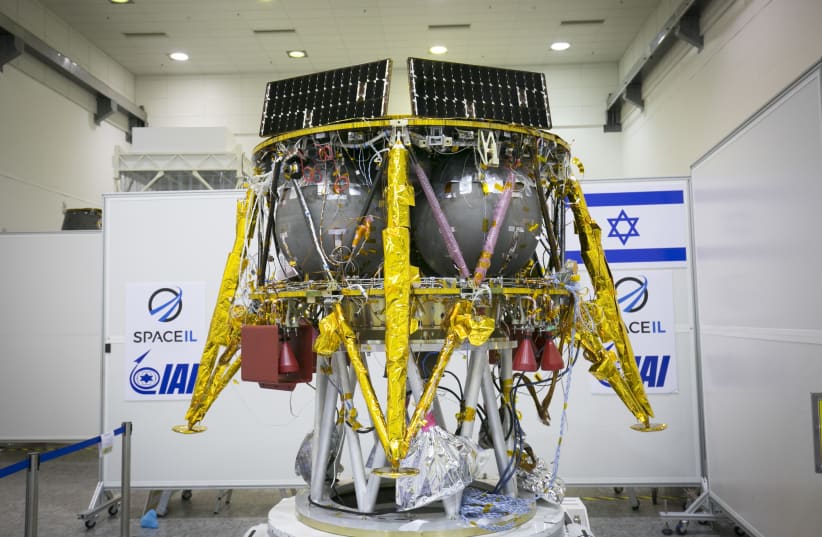The Israeli spacecraft Beresheet will soon take off from Earth, bound for the Moon’s rocky surface. Prof. Oded Aharonson of the Weizmann Institute of Science’s Department of Earth and Planetary Sciences will head the team that will track the capsule’s landing sequence on the Moon, and analyze rocks there.
The Moon’s magnetic field will be measured – both before, during and after the spacecraft lands – by close analysis of rocks. “The main scientific goal will be measuring the magnetic field of the Moon. This will help us understand its source,” Aharonson said.
The Moon has an iron core like Earth, but it has been cooled down and is quite cold. This is unlike Earth’s, whose core is hard but contains components of radioactive isotope decay in the mantle (the warm mid-layer) and in the crust.
Earth’s magnetic field is also due to the heat left over from the planet’s formation. Originally, the core of the Moon was very hot and this energy led some rocks on the surface to be magnetized. However, the core of the Moon has generated a much weaker magnetic force, leaving some rocks or areas with fluctuating rates of magnetism.
“If we can measure the magnetism of these rocks, we can begin to understand how and when this magnetism arose,” Aharonson explained.
Some of Beresheet’s equipment will be used to measure the magnetic field of ancient volcanic rocks to examine whether their intensity is equal to that of the proposed measurements. It may shed light on when such a field was active and when it ceased to be active.
Additional measurements will also be taken to analyze the magnetic field of the Moon’s craters as well. This could directly tie the magnetism either to the Moon’s bombardment by asteroids, to possible magnetic material or to residue leftover from asteroids.
The instrument will first measure the spacecraft’s magnetic field and, as it orbits around the Moon, will attempt to discern those of the surface area. Lasting about 15 minutes, the landing sequence will note the changing frequencies of magnetism as the spacecraft approaches the surface.
SpaceIL and Israel Aerospace Industries are collaborating with NASA and the Weizmann Institute of Science to improve the tracking and communication with the module. The exact landing site was chosen by Aharonson’s international team and will ensure that the spacecraft lands smoothly.
There will also be a complex arrangement of mirrors on board that will shine a laser beam pointing out its location by using NASA’s Lunar Reconnaissance Orbiter. This will help the team pinpoint the exact position of Beresheet.
The launch of the spacecraft, carried by a SpaceX Falcon 9 rocket from Cape Canaveral, Florida, will make Israel only the fourth country – after the US, the former USSR and China – to carry out a successful lunar landing mission.
